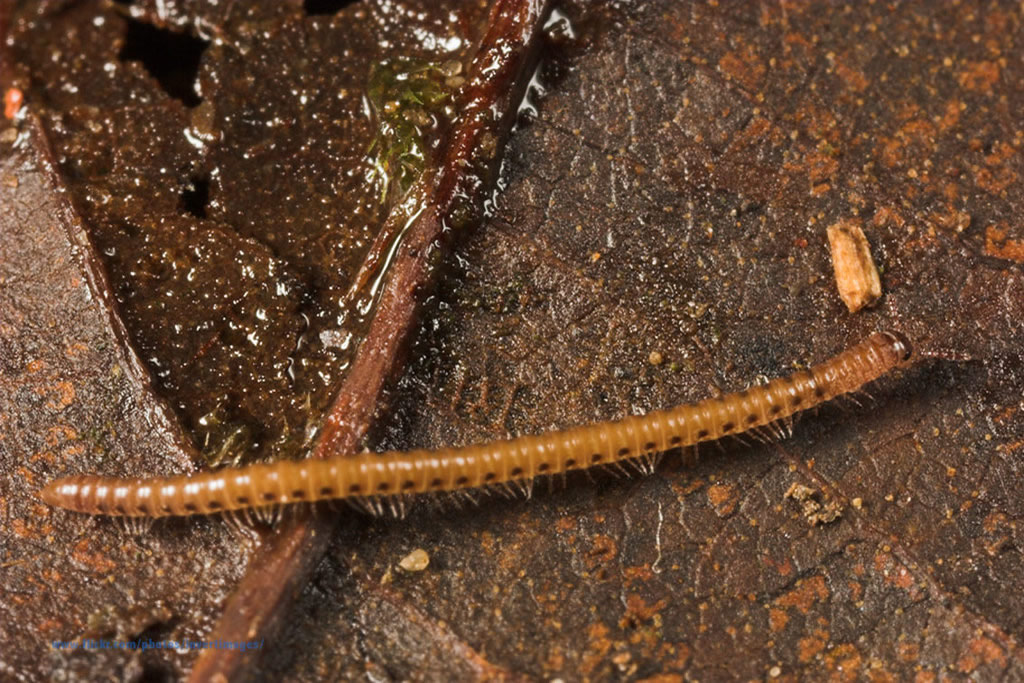Nemasoma varicorne C.L.Koch, 1847
Status:
GB IUCN status: Least Concern
ID Difficulty
Identification
This is a very slender species, usually less than 0.5 mm in width, and with the ommatidia (eye) arranged in a triangular patch.
Confusion is possible with its frequent associate Proteroiulus fuscus, but this species is relative more robust (see images to right) and has its eye comprising a row of ommatidia.
Distribution
Although widespread in Britain and Ireland, this species is less frequently collected than Proteroiulus fuscus with which it is often found.
Nemasoma varicorne has an essentially Central European distribution (Kime, 2004).
Habitat
This species is usually collected by searching under bark on dead trees and stumps but can also be taken in bark traps. Enghoff (1976b) collected the species from beneath the bark of 20 different genera of coniferous and deciduous trees. As might be expected for a sub-cortical species, analysis of the recording scheme habitat data suggests a strong association with woodland. Insufficient data were available to detect any preference for particular tree-species but the millipede shows a preference for beech in Denmark (Enghoff, 1976b) and Belgium (Kime, 2004), for aspen in Sweden (Lohmander, 1956) and for alder in Germany (Haacker, 1968).
Phenology
Enghoff (1994) has shown that normal bisexual populations are found only in the centre of its European range and are replaced by a parthenogenetic form in the peripheral regions including Britain and Ireland in the west, southern Scandinavia in the north and Russia in the east. Thus male specimens are only rarely collected in Britain and Ireland and are probably non-functional.
Adults have been found throughout the year but most frequently in April and May. Maturity is achieved after two years and many animals then reproduce again the following year but very few survive beyond this stage (Brookes, 1974). Kime (1997) has taken the species in pitfall traps in grassland during the winter and suggested this was the season when it dispersed.
This species account is based on Lee (2006).
Links
MilliBase - Global catalogue of Millipedes: https://millibase.org/aphia.php?p=taxdetails&id=936369





